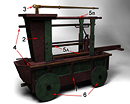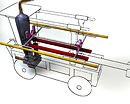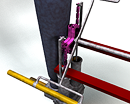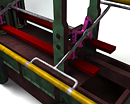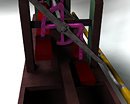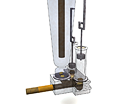Appendix #14: Newsham Engine circa 1730
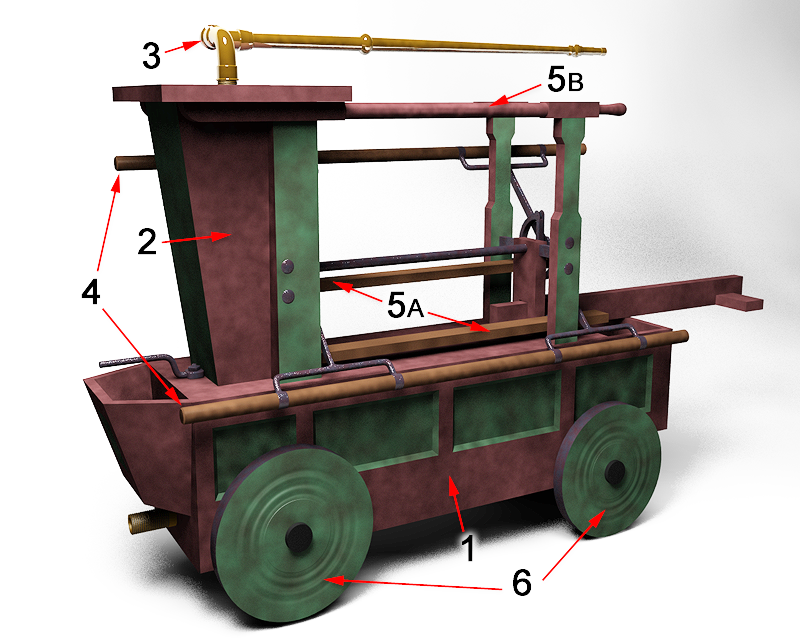
Illustration 14: The Newsham Engine circa 1730
Fig #1: A Newsham Engine as seen in the 1730s. The first engine imported into New-York was of the 5th Size as illustrated here. It was a little over 8 feet long and 6.5 feet high. Newsham said his engines could "...go through any Passage one Yard wide, in compleat working Order..."
- A cistern (1), or basin, held the reservoir of water (about 120 gallons) to be pumped. It was filled by bucket brigade into the open top of the basin or through a pipe in the back.
- The pump housing (2) held the pistons, air tank, etc. that comprised the working parts of the pump. It also provided a platform for a firemen to stand and direct the stream of water.
- The goose-neck nozzle (3) had two finely-threaded joints at its base that allowed the nozzle to be easily directed anywhere in the hemisphere above the pump housing.
- A pair of handles or braces (4) allowed people on both sides of the engine to pull down vigorously (one side at a time) to draw water into the pump (inside the housing) which then expelled the water under pressure through the nozzle. This 5th Size Engine could throw a stream of water forty yards.
- Unique to the Newsham engine were the treadles (5a) that enabled people to stand and pump on them like a modern elliptical exercise machine. Those foot-pumping used the hand-rails attached to the pump housing to maintain balance (5b).
- The larger engines employed wheels so that the engine, although bulky, could be moved into position by a firemen or two. Later versions had the front wheels on rotatable axles to enable turns.
This illustration is from an original 3D model based on The Engineer's and Mechanic's Encyclopedia by Luke Hebert (London: Thomas Kelly, Paternoster Row MDCCCXXXVI) Volume 1 pages 507-508; museum exhibits; and modern-day restorations such as the one at Colonial Williamsburg. The 3D model was produced by Devan Calabrez in collaboration with Bruce Twickler for Docema, LLC.

